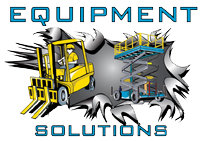
Golf Cart / Mini-Truck / Utility Vehicle Operator Safety Training
 There are many differences between how you operate a car verses how you operate a utility cart. One of the major things to consider when operating you’re a cart is the number of pedestrians that come in contact with a cart throughout a shift. The number is considerably more than if you were driving a full sized car or truck. Another thing to consider is that carts wheels roll very easily. Most of the carts and other utility vehicles are you will be driving are electric, and as such usually do not make any noise while in motion. Many vehicles are used for a variety of tasks beyond the original intended use of the vehicle; therefore it is impossible to anticipate and warn against every possible combination of circumstances that may occur.
There are many differences between how you operate a car verses how you operate a utility cart. One of the major things to consider when operating you’re a cart is the number of pedestrians that come in contact with a cart throughout a shift. The number is considerably more than if you were driving a full sized car or truck. Another thing to consider is that carts wheels roll very easily. Most of the carts and other utility vehicles are you will be driving are electric, and as such usually do not make any noise while in motion. Many vehicles are used for a variety of tasks beyond the original intended use of the vehicle; therefore it is impossible to anticipate and warn against every possible combination of circumstances that may occur.
In a collision with another vehicle – the cart ALWAYS loses!
 Why should you do training? Well, OSHA records a summary of investigation results of accidents involving powered utility vehicles that result in fatalities, catastrophes, amputations, and hospitalizations of two or more days, and those accidents that have received significant publicity or involved extensive property damage. In 2005 there were 208 accidents resulting in 147 fatalities, 115 serious injuries, and 34 "non-serious" injuries. But through common sense and prudent driving practices, we hope to prevent accidents and injuries before they happen by giving each participant the knowledge needed to avoid these risks.
Why should you do training? Well, OSHA records a summary of investigation results of accidents involving powered utility vehicles that result in fatalities, catastrophes, amputations, and hospitalizations of two or more days, and those accidents that have received significant publicity or involved extensive property damage. In 2005 there were 208 accidents resulting in 147 fatalities, 115 serious injuries, and 34 "non-serious" injuries. But through common sense and prudent driving practices, we hope to prevent accidents and injuries before they happen by giving each participant the knowledge needed to avoid these risks.
 During this course, participants will:
During this course, participants will:
- Learn to prevent injury to pedestrians, cart operators and their passengers.
- Establish the requirements for safety devices, operating procedures, laws, operator and supervisor accountability and enforcement.
- Learn to utalize load principles of balance, stability, and capacity .
- Identify Safety Concerns:
- Cart Safety
- Operator Safety
- Pedestrian Safety
- General Rules of the Road
- Learn proper battery charging and changing procedures and hazards/li>
- Learn proper techniques for refueling with liquid fuels.
This Course is Recommend for: Golf Courses, Hospitals, Universities, Ports, Military Bases, Convention Centers, City workers, County Workers, State Workers, Factories, Schools, Power Plants, Security Companies, Construction Job Sites, Casinos, Landscape Workers, Malls, and any company with 5 or more carts or utility vehicles.
We STRONGLY suggest class participants hold a current and valid Driver's Licence.
 Rates
Rates
$125 / each (1 - 2 Participants)
$85 / each (3 - 5 Participants)
$50 / each (6 or More - Participants)
*Evening and weekend rates slightly higher, Projector & Screen available at an additional charge of $25.00 per class.
Train the Trainer Rates
$350.00 per person plus at least one master kit needed per company
$750.00 Trainer Master Kit
The rates above reflect our rates for San Diego County. Training is available in: Orange County, Imperial County, Los Angeles County, San Bernadino County, Riverside County, Santa Barbara County, Ventura County & more. Please contact our office for more information on these classes. For training outside of San Diego County, there is no charge for classes of 10 students or more in San Bernardino, Orange, & Imperial Counties. There will be a $125 travel charge if class is less than 10 students. Will travel All over California & US, Contact Us for more information or a quote.
OSHA Requires refresher training, including an evaluation of the effectiveness of that training, shall be conducted to ensure that the operator has the knowledge and skills needed to operate the powered industrial truck safely. Refresher training in relevant topics shall be provided to the operator when: (A) The operator has been observed to operate the vehicle in an unsafe manner (B) The operator has been involved in an accident or near-miss incident (C) The operator has received an evaluation that reveals that the operator is not operating the vehicle safely (D) The operator is assigned to drive a different type of utility cart (E) A condition in the workplace changes in a manner that could affect safe operation of the powered industrial truck. (F) An evaluation of each powered industrial truck operator's performance shall be conducted at least once every three years. [OSHA Standard 1910.178(l)(4)]